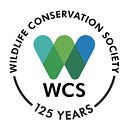Manus Island’s Great Central Forest Under Threat
By Nathan Whitmore | December 10, 2019
For many years, biologists and conservationists across the globe have recognized Papua New Guinea as one of the world’s greatest hotspots for biodiversity. Some 300 kilometers north of New Guinea’s mainland is the island of Manus. Its Great Central Forest covers approximately 70,000 hectares of the largest, remnant patch of intact forest in the Admiralty Islands.
The forest boasts many species found nowhere else, including the Admiralty cuscus, the Superb Pita, and the Manus melomys. Scientists still routinely uncover new forest creatures. Recent discoveries include four species of frog (yet to be described), a giant gecko (Gehyra rohan) and a very large rat (Rattus detentus).
Maintaining the integrity of the Great Central Forest also benefits local people, who rely on it for as housing materials, medicine, drinkable water, and food. One of the most important native species for these communities is the Admiralty cuscus (Spilocuscus kraemeri), a furry, nocturnal cat-sized marsupial that serves as a major source of dietary protein.
In order to ensure the cuscus’s persistence, WCS (Wildlife Conservation Society) has been undertaking research on its population dynamics, as well as trying to revitalize traditional management systems (tambu) that provide temporary hunting bans allowing the species to reproduce and recover.
WCS’s research has shown that sustainable hunting depends on habitat connectivity across the forest. Traditional management systems will fail if clearing for logging and agriculture breaks up the forest into small patches.
“The forest boasts many species found nowhere else, including the Admiralty cuscus, the Superb Pita, and the Manus melomys. Scientists still routinely uncover new forest creatures.”
While villagers understand the value of the forest, they also yearn for basic community and household infrastructure that the forest can’t adequately provide. Amongst their priorities are: schools, community halls, water tanks, footbridges to safely navigate crocodile-infested rivers, sturdy roofing materials, and solar panels to provide household light and charge mobile phones. Because there has been little support from the national or provincial government to support these basic needs, local people feel pressure to cash in on their one tradeable commodity — trees.
Three timber species present in the forest are of particular commercial value: calophyllum, taun, and kwila. Of these, commercial logging companies most highly prize kwila (known also as merbau or ipil) for its durability and usefulness as decking and outdoor furniture.
Under Papua New Guinean law, all forestry has to be sustainable. To achieve that goal, commercial loggers are obliged to undertake selective logging, with a mandatory thirty-five year rotation period before repeat harvesting.
Unfortunately, unscrupulous forestry companies can circumvent Papua New Guinean forestry law by claiming to undertake agro-forestry projects such as the development of rubber or oil palm plantations. In such cases, a company can apply for a Forest Clearance Authority, which allows them to clear-fell the entire forest under their lease.
Operators have a reputation for felling the trees, then exporting the hardwood timbers at great profit — in the process denying royalties to village clans and failing to create the plantations that forest clearance was approved for.
WCS quickly saw the threat posed by using Forest Clearance Authorities as a pretext for unsustainable logging. By partnering with local communities interested in conserving their forests through short-term conservation agreements, WCS managed to meet some of their infrastructure needs while ensuring the short-term protection of 43,000 hectares of forest. Although these short-term agreements are a band-aid approach, WCS is working in partnership with the local communities and the government to establish a network of community conservation areas that will offer longer-term protection.
“Due to concerns that communities sometimes enter into logging agreements without full understanding of their rights, WCS joined with a local organization to guide better environmental decision-making.”
As part of this initiative, WCS is also providing support to local farmers to develop a conservation-compatible livelihood centered on vanilla production. The increased income generated from the vanilla initiative should lessen local demand for additional income and consequently reduce the economic pressure on indigenous landowners to engage with unsustainable logging.
Earlier this year, as predicted, a foreign logging company began using a Forest Clearance Authority as a pretext for logging the southern portion of the Great Central Forest. Such authority would threaten the species that call the forest home and undermine the traditional management of the Admiralty cuscus, while stripping communities of their forest resources.
Due to concerns that communities sometimes enter into logging agreements without full understanding of their legal rights, WCS joined with a local organization, the Center for Environmental Law and Community Rights to raise awareness with Manus landowners in order to guide better environmental decision-making.
Currently, the fate of the Great Central Forest remains delicate. The survival of the island’s native species rests upon the swift development of legally protected community conservation areas to ensure logging operations are contained and community boundaries respected. WCS is currently investigating the different protection options available, and canvassing forest communities for interest.
Failure to adequately protect the remaining forest will affect the sustainability of traditional management practices and decrease the availability of forest resources for nearby communities. Given the geographical isolation of Manus Island, local people must remain self-sufficient. Undermining that necessity could come with a human price.
Nathan Whitmore is a scientific support officer with the Papua New Guinea program at WCS (Wildlife Conservation Society).
[The work described in this commentary is supported by the Australian Government Department of Foreign Affairs and Trade and the Critical Ecosystem Partnership Fund.]
